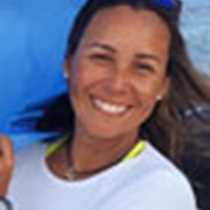Floreana Island
This is our second full day of our expedition in the Galápagos, and it has already started gloriously with a warm, colorful morning. Floreana is located in the south of the archipelago, and its profile looks hilly and charming. The National Geographic Endeavour has anchored at Post Office Bay, on the north of the island. Here, a barrel was placed during the whaling era in the Galapagos (1793), in order to deposit mail that would be delivered by the crew of passing ships on their homebound trips. This is a tradition that is still kept alive by those who still visitor Galápagos, making this place the oldest ‘post office’ this side of the Pacific! Of course, a keen group of explorers from the National Geographic Endeavour were sent ashore to honor this tradition.
But this was not our only expedition this morning. Offshore Floreana, we went to a small islet, in fact a small, semi-eroded volcano called Champion. This is the home to a critically endangered species of bird, the Floreana mockingbird. Only approximately 150 individuals of this species, endemic to Floreana Island survived, after decimation by introduced predators. No one can land on Champion, so we toured around this islet by Zodiac in order to spot this endangered bird, and we succeeded! Champion landscapes and wildlife are stunning, but we also had a chance to explore its undersea world. Some guests did it by glass-bottom boat, but others preferred to jump in the water and see for themselves! Our fearless snorkelers were able to encounter endless schools of fish, inquisitive Galápagos sea lions and even rays.
In the afternoon, we moved onto another beautiful corner of Floreana Island, this time to drop anchor at Punta Cormorant. We landed at the olivine beach. The sands of this beach have a greenish tinge, as they’re largely composed by tiny, volcanic olivine crystals. Here, some of our guests had some time to enjoy the sand and the water. Several enjoyed kayaking in this bay, while others preferred to snorkel off the beach. But everyone certainly enjoyed a walk in Punta Cormorant. Galápagos habitats support a small population of Greater Flamingos (500 approx.), and every week a group of them is found in the large brackish lagoon here. Their vibrant pink plumages make a superb contrast with the colors of this arid environment. At the end of the trail we found the ‘flour beach’, named after its white, super-fine sand. Our resident species of turtle, the Pacific Green sea turtle, prefers this type of beach to lay their eggs, because it is cooler than other volcanic dark sands in the islands. We can easily spot evidences of this all along ‘flour beach’.
The sun sets rather quickly being so close to the equator line. It was time to go back on board, where we could all share our experiences of the day, and find out more about what is to come tomorrow.
Call +1.800.397.3348 or contact your travel advisor



